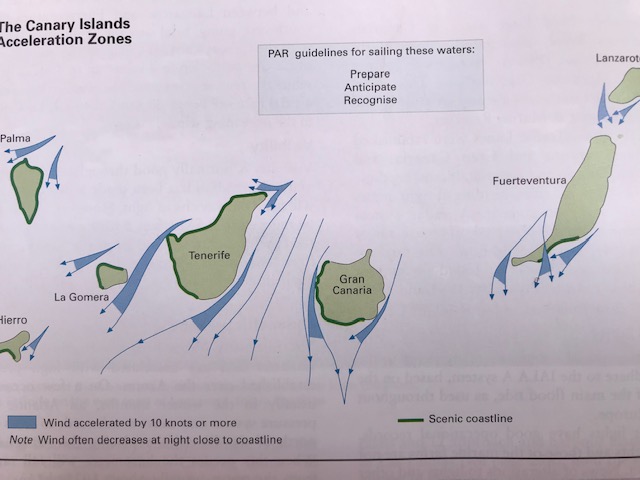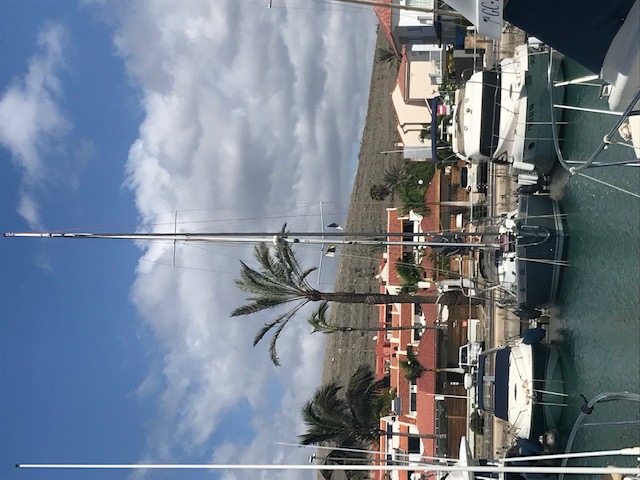Acceleration zones and lazy lines

Griselda
Nicola
Thu 13 Oct 2022 13:25
Following a four day stop in Gran Tarajal, we decided on a night sail to our next port of call to avoid arriving in the dark. We left Gran Tarajal for Puerto Pasito Blanco, on the south coast of Gran Canaria, in calm winds late afternoon. Not long into the sail we were close to being becalmed for a short period of time and then the wind filled in. The Canary Islands are also known for an additional 10-15 knots of wind in so called acceleration zones, where the wind channels round certain parts of the islands. This was the case as we reached the south-west boot of the island, where we reefed up in a hurry, despite the Atlantic Islands Pilot warnings of advanced preparation!
As you can see from our track shown by the yellow line in the image below, we sailed through the zones, and the wind did indeed behave as predicted. There is a large charted area to the south coast of Fuerteventura that prevented us taking a more direct route, as it is an exclusion zone. We also needed to cross below the shipping lanes between the islands for the optimum passage (as shipping lanes can only be followed in the correct direction or crossed at right angles), something we won’t need to contend with when crossing the Atlantic.
The first night watch was interesting with a vessel showing on AIS doing 32 knots heading in our direction. The AIS details on the helm plotter showed it was the high speed inter island ferry.
When it got to 9 minutes and showing just at few metres as closest point of approach
(CPA), it was time for a radio call to check the ferry had actually seen us. The ferry’s course was suitably altered to leave a safe distance between our respective vessels and the rest of the watch passed by with just the odd fishing boat to contend with.
It was quite a wild night with winds on the beam up to 26kts but we made good speed under two reefs and at one point half the jib, arriving in port about 9.30am.
It’s a long time since we have used a marina that is anything other than the standard finger pontoons. The marina at Pasito Blanco use lazy lines (which avoids using an anchor), typical of the Mediterranean and allows for more boats to be ‘squeezed’ in. Well fendered up we went stern to into the berth, to make it easier for stepping on and off the boat, picking up the lines with the boat hook and attaching them to the forward cleats, effectively acting as brakes. You can see the lines from the bow in the photo below (along with a few palm trees).
We’d planned to stay at Pasito Blanco for four nights but the wind between the islands of Gran Canaria and Tenerife looks a bit strong for the next couple of days. We’ll stay put here until the weekend, ahead of sailing to Puerto Radazul, a few miles south of Santa Cruz in Tenerife. From Radazul we’ll post another update, as the penultimate port prior to the first leg of our Atlantic crossing.




